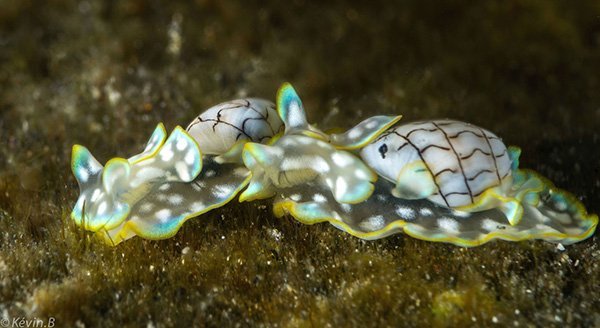The bubble snail, a rare Australian visitor

Bec Crew
Bec Crew

IF THERE WERE a sea snail version of Cinderella, this would be it. It’s basically just one big magical glass slipper supporting a perfectly pink shell with careful patterns running along its lovely smooth curves. Meet Micromelo undatus, otherwise known as the miniature melo.
This elusive sea snail is found throughout the Indo-West Pacific and Atlantic Oceans, including off the coast of the US, South Africa, Japan, Thailand, and in very rare cases, Australia. Just a handful of these special little creatures have been spotted in our waters, taking advantage of the warm and shallow waters surrounding our coastal reefs and soft algal turfs.
They belong to the family Aplustridae, the members of which have been nicknamed ‘bubble snails’, because they carry tiny bubble-shaped shells atop their brightly coloured flesh. Each species in the family has a white, beige, or pink-coloured shell, and their bodies can be anything from a bright daffodil yellow or a deep, dusky rose to a ghostly blue or dark, spotted green.

Two Micromelo undata, with white spots and a yellow-green rim. (Credit: Kevin Bourdon/Flickr)
A snail that can’t hide in its shell
Unlike many other types of snails, bubble snails cannot fully retract their soft parts into their shells – I have no idea how they’d fit all that in there anyway – so their only defence from predators is great camouflage and a fast getaway. They’re also only about a centimetre in length, so they have tininess on their side too.
The miniature melo feeds on upon cirratulid polychaete worms, which are covered in strange, yellowish tentacles that curl and accumulate where their heads should be.
It’s thought that like many other Opisthobranchs, which is an order that includes sea snails, sea angels, sea butterflies, and nudibranchs, the miniature melo consumes the toxins of its worm prey and stores it in its flesh. This means larger sea creatures will learn pretty quickly this tiny sea snail makes a really unpleasant meal.
Stay mellow, little melo.




